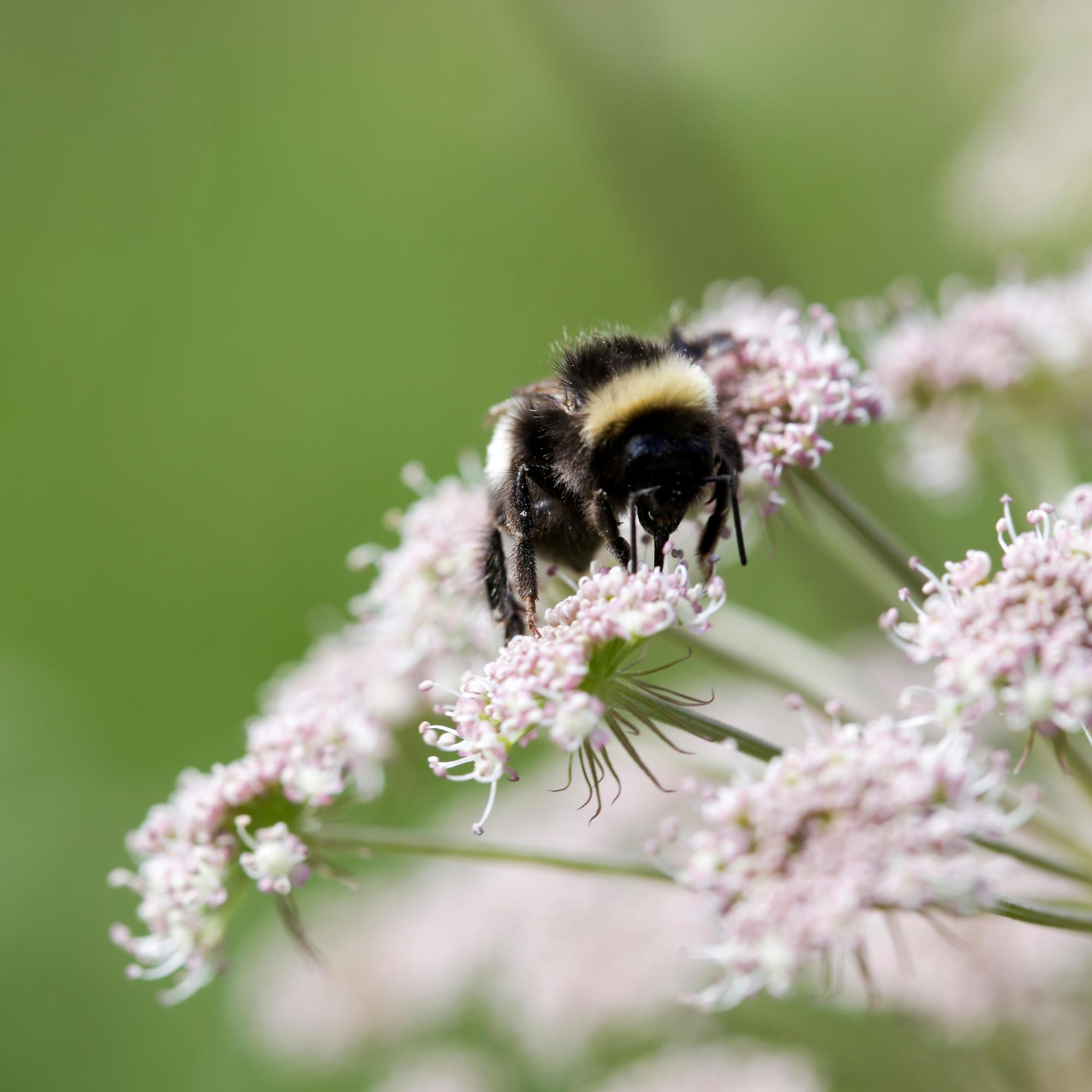
The bumblebee is an irreplaceable pollinator—how to provide food and support nesting in your garden
Bumblebees are important pollinators. Does your garden have enough food and nesting sites for them? Read these tips on how to take care of bumblebees.
A year in the life of a bumblebee
Waking up in April
The first overwintered queens emerge in April when especially willow and coltsfoot provide nectar and pollen. Their furry coats and ability to generate heat through muscle vibration allow bumblebees to fly even in chilly weather. Finding a suitable nesting site near ground level can take several weeks of persistent searching.
Support bumblebees with supplemental feeding from late April to early May when their natural food is scarce. Learn how to create a bumblebee feeding station! [in Finnish]
Bustling midsummer
Small worker bees hatch from eggs in spring and early summer, while males and large queens emerge in July–August. The bumblebee population reaches its peak in late July. Without nearby flowering plants, bumblebees must expend precious energy traveling long distances for nectar and pollen.
Preparing for winter
After mating, the queen seeks a winter nest in August, which, depending on the species, can be in dead wood, a ground hole, moss, a hay or straw pile, a stone pile, or a mouse hole. They create hibernation chambers in shaded spots about 10 centimeters below ground.
Long hibernation
Queens hibernate for 8–9 months, sustained by nutrient reserves of sugars, fats, and proteins stored in their abdomen. The queen also produces glycerol, which prevents ice crystals from forming in her tissues.
4 essential ways to help bumblebees
1. Provide food sources
A bumblebee colony can survive only a few days without nectar and pollen, so good food plants should be available from early spring through late summer. Maintain flower-rich verges and meadows, and plant food sources like phacelia, raspberries, and fruit trees. Welcome clover, dandelions, and bulb flowers in your lawn, and allow willows to grow on your property.
2. Avoid harmful chemicals
Steer clear of ant control products in your garden and opt for untreated seeds.
3. Create nesting opportunities
Preserve decaying stumps, standing dead trees, grass tussocks, and vole holes as potential nest sites. Some species will also nest in bird boxes or wooden boxes (20 centimeters in diameter with a 16-millimeter entrance). Alternatively, you can dig a 15-centimeter-deep, 20-centimeter-wide hole in a sunny location. Fill halfway with dry hay and moss, cover with a wooden lid, then soil and leaves, leaving a small entrance hole leading to the cavity.
4. Establish winter shelters
Leave piles of hay and patches of open sandy soil along garden edges where queens can burrow for hibernation.
A brushwood fence provides shelter for beneficial decomposers and insects. Even small branches can be used in building the fence. Follow our illustrated guide to building a brush fence!

Expert: Senior Museum Technician Juho Paukkunen, Finnish Museum of Natural History Luomus


